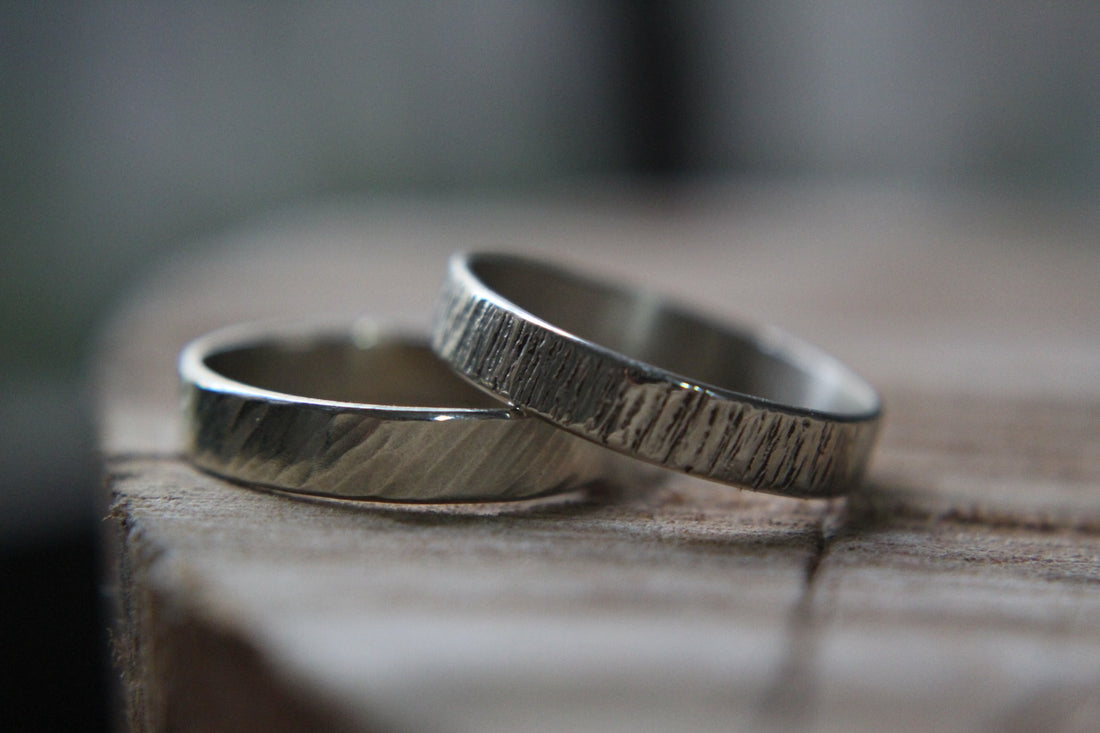
Sterling Silver vs Silver: What's the Difference?
Share
Sterling silver and silver are two terms that are often used interchangeably, but they are not the same. Sterling silver is a type of silver, but it is not pure silver. In this article, we will explore the differences between sterling silver and silver.
What is Silver?

Silver is a precious metal that has been used for thousands of years for jewelry, currency, and other purposes. It has a beautiful shine and is quite malleable, making it easy to work with. Pure silver, however, is too soft for most practical uses, so it is often alloyed with other metals, such as copper, to make it more durable.
What is Sterling Silver?
Sterling silver is an alloy of silver that contains 92.5% silver and 7.5% other metals, usually copper. The added metals help to make the silver more durable and less prone to scratching or tarnishing. Sterling silver is used to make a wide variety of jewelry, flatware, and other decorative items.
How to Tell the Difference Between Sterling Silver and Silver

One of the easiest ways to tell the difference between sterling silver and silver is to look for a hallmark or stamp on the item. Sterling silver is often marked with the numbers "925," which indicates that it contains 92.5% silver. However, not all silver items will be marked, so you may need to rely on other tests.
You can also test the silver by using a magnet. Silver is not magnetic, so if the item is attracted to the magnet, it is not pure silver. However, if the item is not magnetic, that does not necessarily mean it is sterling silver, as some other metals, such as stainless steel, are also not magnetic.
Pros and Cons of Sterling Silver and Silver
Both sterling silver and silver have their advantages and disadvantages.
Pros of Sterling Silver:
- More durable than pure silver
- Resistant to tarnishing
- Less expensive than pure silver
Cons of Sterling Silver:
- Contains less pure silver than silver
- May cause allergic reactions in some people due to the added metals
Pros of Silver:
- High shine and luster
- Soft texture makes it ideal for intricate designs
- Timeless/classic appeal
Cons of Silver:
- Highly prone to tarnishing
- Too soft and pliable when in pure form
- Cost can be higher than sterling silver due to its high purity.
How to Care for Sterling Silver and Silver
Both sterling silver and silver require proper care to maintain their shine and durability.
To care for sterling silver, you should keep it clean and dry. Store it in an airtight container or bag, and avoid exposing it to harsh chemicals or abrasive materials. You can use a soft cloth or special silver cleaning products to remove tarnish.
To care for silver, you should also keep it clean and dry. Store it in a dry place, away from direct sunlight, and avoid exposing it to harsh chemicals or abrasive materials. You can use a soft cloth or special silver cleaning products to remove tarnish. Some silver pieces may require professional cleaning.
Conclusion
In conclusion, while sterling silver and silver are both beautiful and versatile metals, they are not the same. Sterling silver is an alloy of silver that contains other metals to make it more durable, while silver is a precious metal in its pure form. When choosing between sterling silver and silver, it is important to consider your needs and preferences, as well as the pros and cons of each metal.
FAQs
- Is sterling silver more expensive than silver?
- No, sterling silver is usually less expensive than silver.
- Can I wear sterling silver in the shower or while swimming?
- It is not recommended to wear sterling silver in the shower or while swimming, as exposure to water and harsh chemicals can damage the metal.
- Why does silver tarnish?
- Silver tarnishes when it comes into contact with sulfur-containing compounds in the air or in materials like rubber or wool.
- Can sterling silver jewelry cause allergic reactions?
- Yes, some people may have a allergic reaction to the added metals in sterling silver.
- How can I remove tarnish from silver jewelry?
- You can use a soft cloth or special silver cleaning products to remove tarnish from silver jewelry.